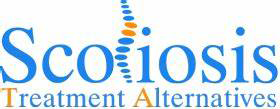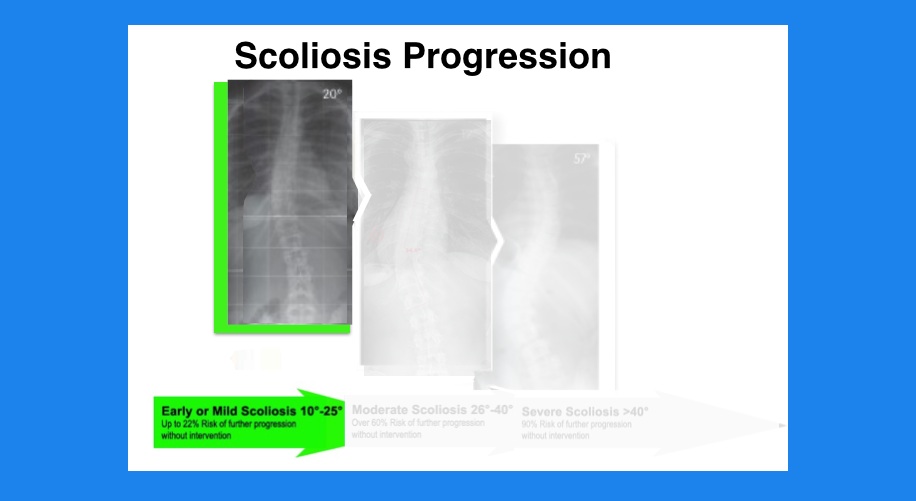Without intervention even a mild case of scoliosis can carry a risk of progression to a larger curve (up to 22% and if the curve progresses past 30 degrees the risk of progression sky rockets to 68%.* Intervention in these early stages so that the curves do not progress past this threshold mark is critical as it offers the best chance of success if the problem is nipped in the bud at the beginning stages when it is most correctable.
Although the abnormal curvature of the spine may be observable to the trained eye when examining posture, pain is not always present, especially in young patients.
Intervening in the early stages when the problem is most correctable to stop the progression makes the most sense in averting a major health crisis that can occur with more Severe Scoliosis.
Comparison of Treatment Approaches:
- Conventional Approach: Watch and Wait for it to get worse
- Alternative Approach: Early Intervention when problem is most correctable
If you were told there was a CHANCE that a Tsunami may be coming would you just “Watch and Wait” for it to Hit?
Then does it make sense to do that with your child’s health?
Although many questions about the exact cause of scoliosis remain there are two things that remain certain in idiopathic scoliosis: Smaller curves CAN and often DO progress into larger, more aggressive curves due to the constant forces of gravity on an unbalanced structure called the scoliotic spine.
Despite this fact, the Conventional Approach still recommends “watch and wait (for it to get worse)” method for patients with curves 25 degrees or less. The problem with this approach is that doing nothing to correct the unstable structure of a scoliotic spine makes options like hard bracing and surgery a self-fulfilling prophecy. What is worse is that this strategy of sticking your head in the sand and hoping for the best simply delays treatment and reduces the opportunity for stopping the progression of the scoliosis curves early, when it is most manageable.
Our Alternative Treatment Protocols for mild idiopathic scoliosis were specifically created by noted Orthopedic Spine Surgeons, Dr. Charles Hilaire Rivard and Dr. Christine Coillard, at St. Justine’s Hospital in Montreal. Rather than just “watch and waiting” for the curves to progressively worsen, the earlier this treatment is started the better the chances are for correction.
The fundamental shift in thinking between the rigid brace and a dynamic brace is that with the dynamic brace you are using a more natural approach that allows the spine to help correct itself with dynamic movements rather than the traditional, antiquated way of the rigid brace that placed an outside stress on the body to force it into correction.
This, in addition to Schroth Method exercises and postural corrections through specific spinal adjustments provides an early strategy that allows for the best opportunity to reduce and stabilize their spinal curve of a mild scoliosis before it progresses.
Benefits of Alternative Care for Early or Mild Scoliosis
- Avoid problems associated with “Watch and Wait” for it to get worse
- Avoid progression of curves to the point that bracing or surgery is recommended
- Relieve pain
- Increase vital lung capacity and relieve organ pressure
- More energy
* Curve Progression in Ideopathic Scoliosis, The Journal of Bone and Joint Surgery, SL Weinstein and IV Ponseti, J Bone Joint Surg. Am. 1983:65;447-455

